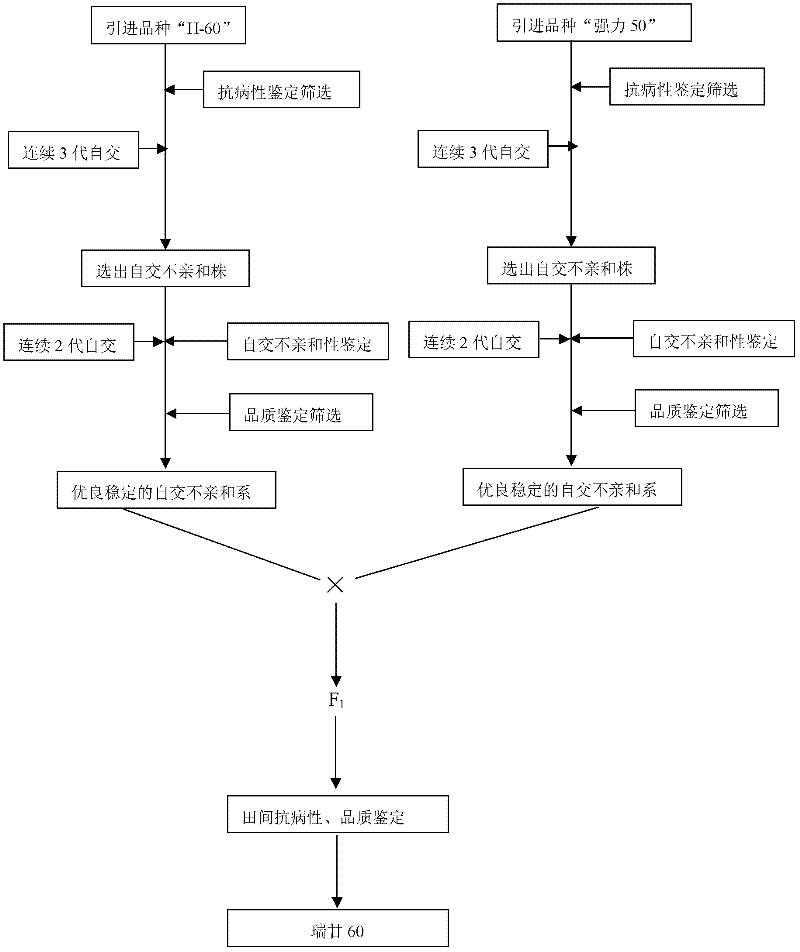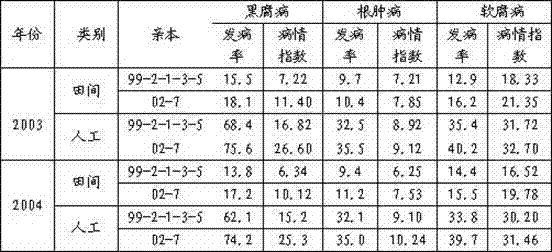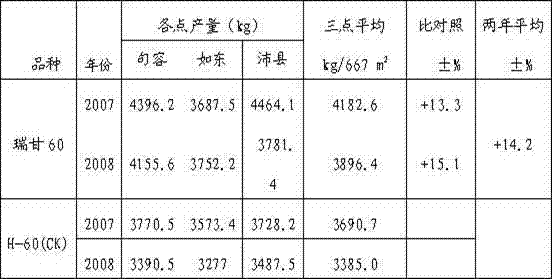Breeding and seed production method of disease-resistant cabbage
A technology for cabbage and varieties, applied in the directions of botanical equipment and methods, application, plant genetic improvement, etc., can solve the problems of poor quality traits, palliative treatment, not obvious stress resistance and disease resistance, etc., and achieve disease resistance. Strong and controllable effect
- Summary
- Abstract
- Description
- Claims
- Application Information
AI Technical Summary
Problems solved by technology
Method used
Image
Examples
Embodiment 1
[0021] Materials: H-60 (source: Nozaki Seed Farm, Japan, available from Zhenjiang Ruifan Agronomy Co., Ltd.), Qiangli 50 (source: Japan Kobayashi Company, available from Wuhan Jiutouniao Seed Industry Co., Ltd.).
[0022] For the process model of this embodiment, see figure 1 , specifically breeding according to the following steps:
[0023] Step 1: Breeding the female parent. At the beginning of the breeding, H-60 cabbage was sown and cultivated in the autumn of 1998, and an excellent single plant with good growth, round leaf balls and strong disease resistance was selected for seeding, and flowering and planting were carried out in the spring of the following year. Seeds were obtained by selfing at the bud stage. The seeds obtained were sown in the autumn of 1999, and then planted in greenhouses. A total of 42 plants were planted. The relative humidity in the greenhouse was artificially controlled at 75%-85%, and the temperature was 22°C-30°C. At the adult stage, select...
PUM
 Login to View More
Login to View More Abstract
Description
Claims
Application Information
 Login to View More
Login to View More - Generate Ideas
- Intellectual Property
- Life Sciences
- Materials
- Tech Scout
- Unparalleled Data Quality
- Higher Quality Content
- 60% Fewer Hallucinations
Browse by: Latest US Patents, China's latest patents, Technical Efficacy Thesaurus, Application Domain, Technology Topic, Popular Technical Reports.
© 2025 PatSnap. All rights reserved.Legal|Privacy policy|Modern Slavery Act Transparency Statement|Sitemap|About US| Contact US: help@patsnap.com



